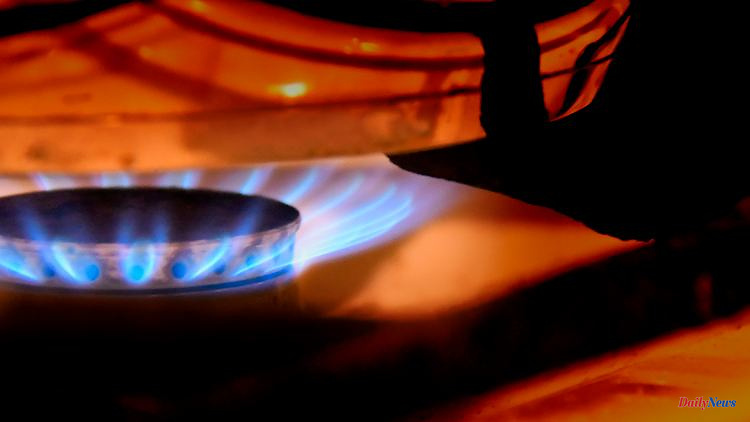How secure is the gas supply in Germany? The Federal Network Agency presents new figures every day. The indicators document successful savings and point to trends - but they also cause irritation.
Persistent cold is causing gas consumption in Germany to increase as expected and the filling level of German gas storage facilities to drop. Overall, industry and households once again consumed a good 21 percent less gas in the past week (calendar week 47) than on average in previous years. In its daily status report on the gas supply, the Federal Network Agency nevertheless complains that the temperature-adjusted gas consumption in the past week was only a good 24 percent below the reference value of previous years. As a result, the recently introduced indicator for temperature-adjusted gas consumption jumps to "strained".
Just like the other consumption data, the graphic can always be updated on Thursdays and reflects the status of the previous week.
In the coming days, too, German households will find it difficult to cut down on heating. The Federal Network Agency is expecting temperatures this week to be 0.73 degrees Celsius below the average of previous years. In the previous week, however, it was slightly warmer than the previous year's average (0.5 °C).
All in all, significantly more gas is now being withdrawn than is being stored. The filling level display of the gas storage drops accordingly to 98.24 percent - and thus remains completely in the green area. The Federal Network Agency reports that the supply is currently secured and at the same time emphasizes "the importance of economical gas consumption".
The federal authority responsible for the energy supply remains on alert and closely monitors what is happening. The weekly or even daily published data on the stored, imported and consumed gas quantities serve as an early warning system if Germany is approaching a shortage. Citizens can also see from the values whether the collective savings efforts are having an effect.
Since the start of the heating season, this question has almost always been answered with "yes". On average, industry, commerce and households consumed visibly less gas than in previous years. However, because consumption in private households depends heavily on outside temperatures, the Federal Network Agency introduced the two indicators mentioned above at the end of November.
The temperature forecast every Monday gives a preview of the forthcoming heating week. If, according to the DWD weather forecast, the average weekly temperatures fall slightly below the average of previous years (by 0 to 2°C), the Federal Network Agency classifies this indicator as "tense" because higher gas consumption is to be expected.
According to estimates by the Federal Network Agency, a temperature difference of 1 degree Celsius can mean additional consumption of around 1 terawatt hour per week. At temperatures that are more than 2 degrees Celsius below the previous year's average, the indicator jumps to "critical". If the severe winter continues, the high demand for gas may have to be offset with additional imports or savings.
But just because it's getting colder doesn't necessarily mean that gas consumption will rise above the usual level at this time of year. On the contrary: the data clearly shows that companies and private households are paying more attention to economical gas consumption this year than before the start of the Ukraine war, even when temperatures are low.
The empirical values for the years 2018 to 2021 serve as a reference for the temperature-adjusted consumption, albeit under the aspect of the weather: What consumption would have been expected given the last measured daily temperatures? How tall was he actually? For the ntv.de graphic shown at the beginning of the text, the difference between these two figures is formed and the deviation is shown as a percentage.
The aim is to reduce temperature-adjusted consumption by 25 percent or more. With a 15 to 25 percent decline compared to the reference value, the indicator points to a "tense" situation. Temperature-dependent savings of less than 15 percent are considered "critical".
These new requirements caused irritation when the indicators were presented. After all, the Federal Network Agency had previously issued a savings target of at least 20 percent - and is still sticking to it. However, the authority refers to the actual consumption and model calculations for the development of the storage levels. The reasons which factors could have caused the additional consumption are of secondary importance here.
Nevertheless, the new temperature-dependent indicators are revealing - especially because they provide clear evidence of a change in behavior in the population for the first time.












